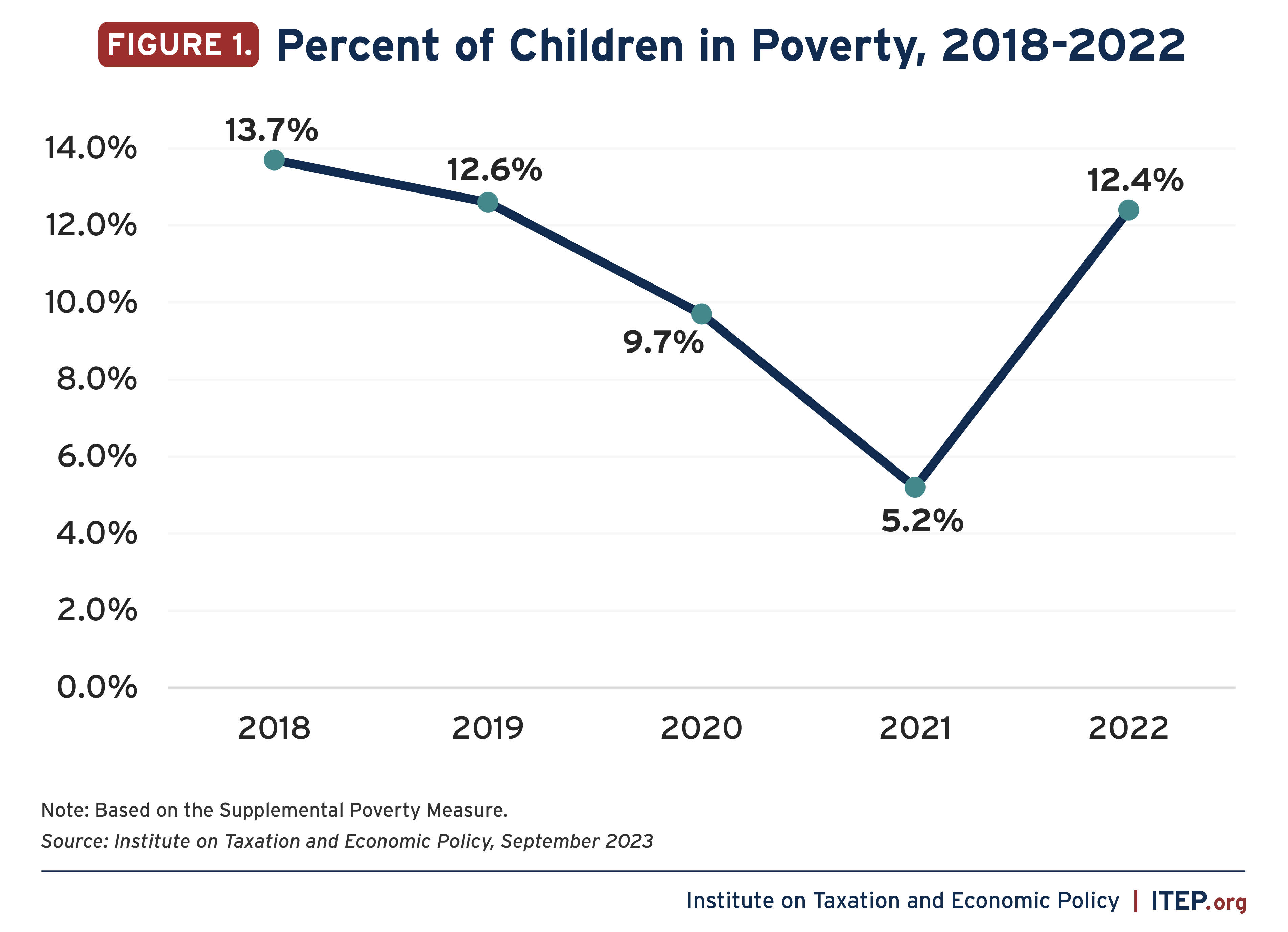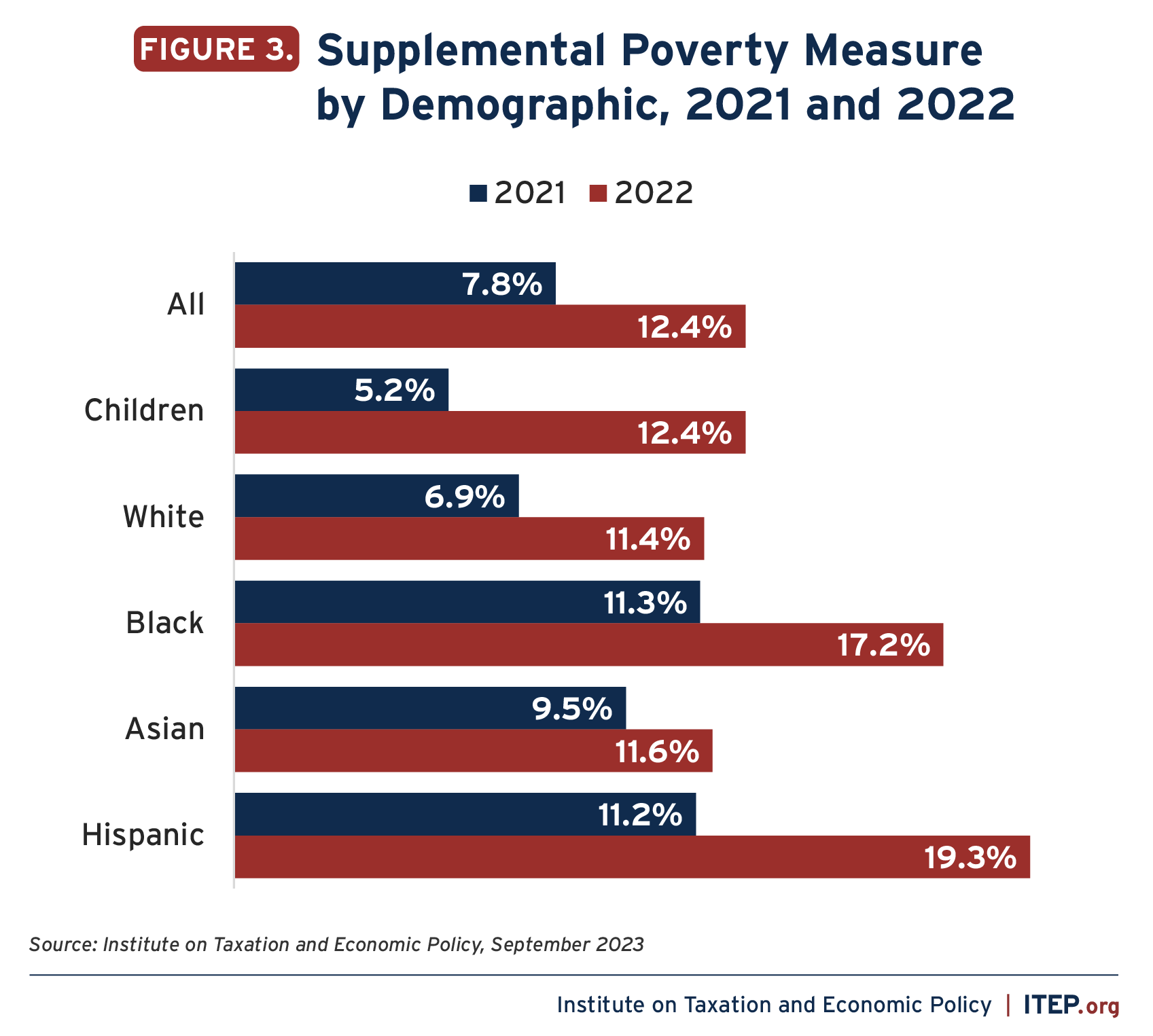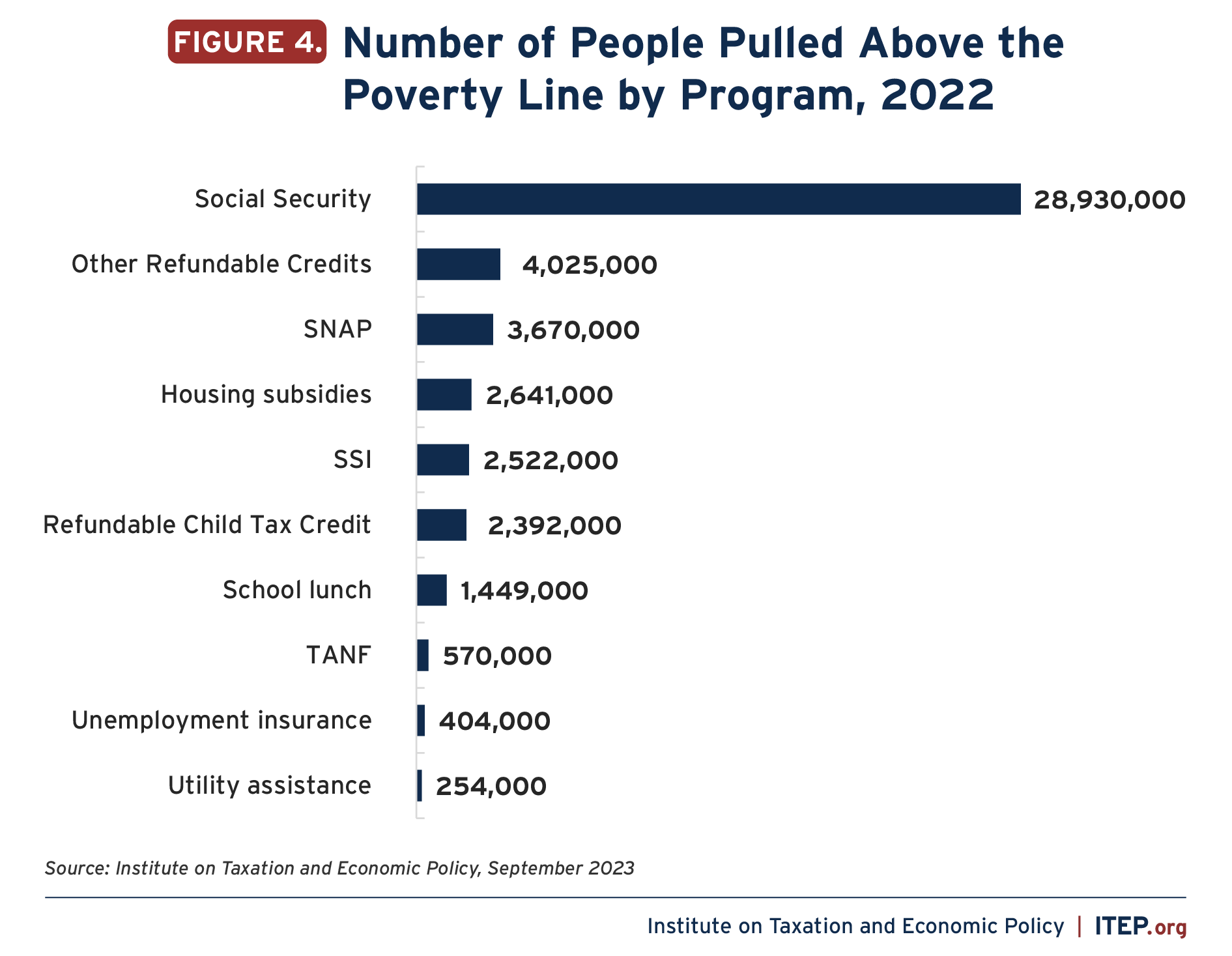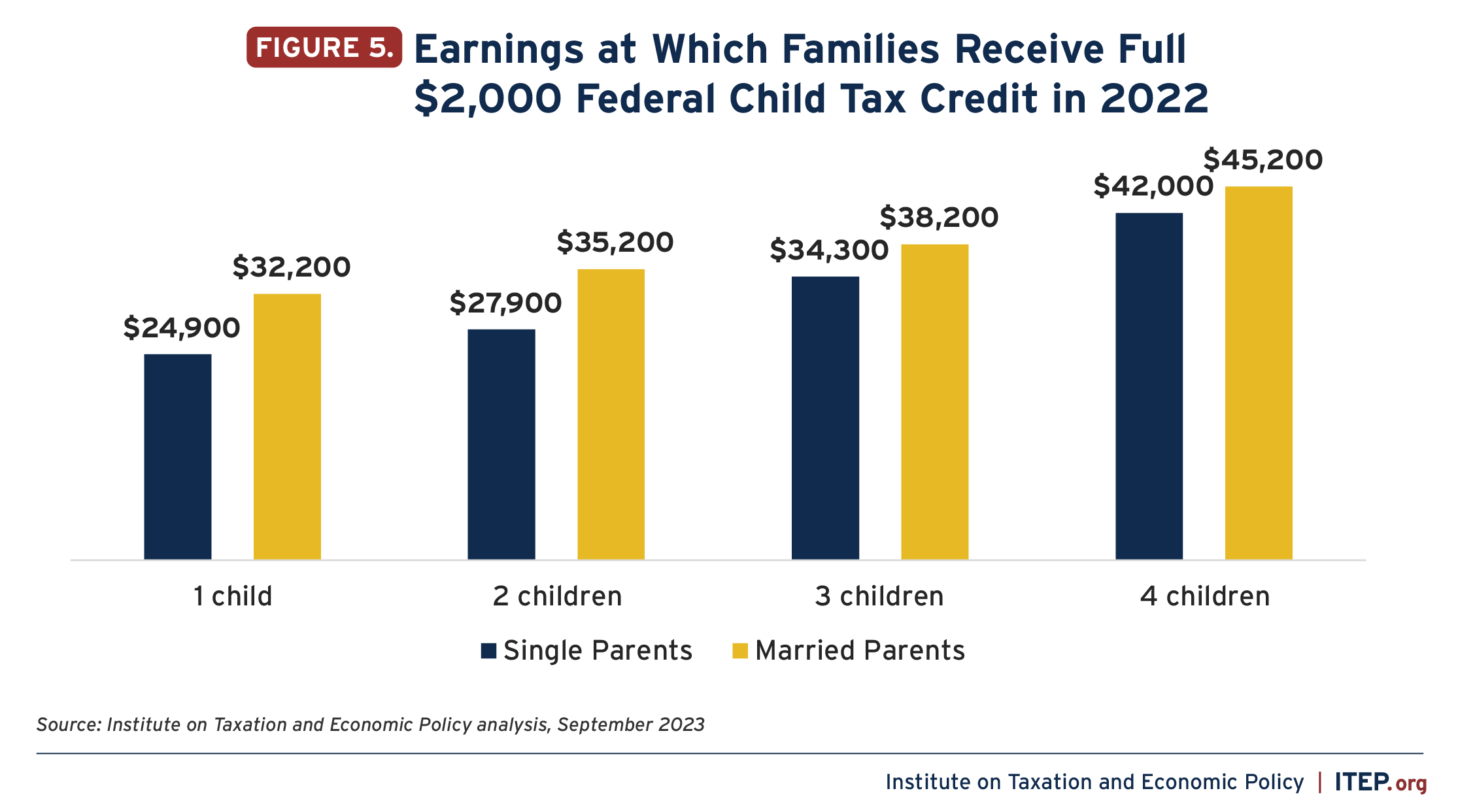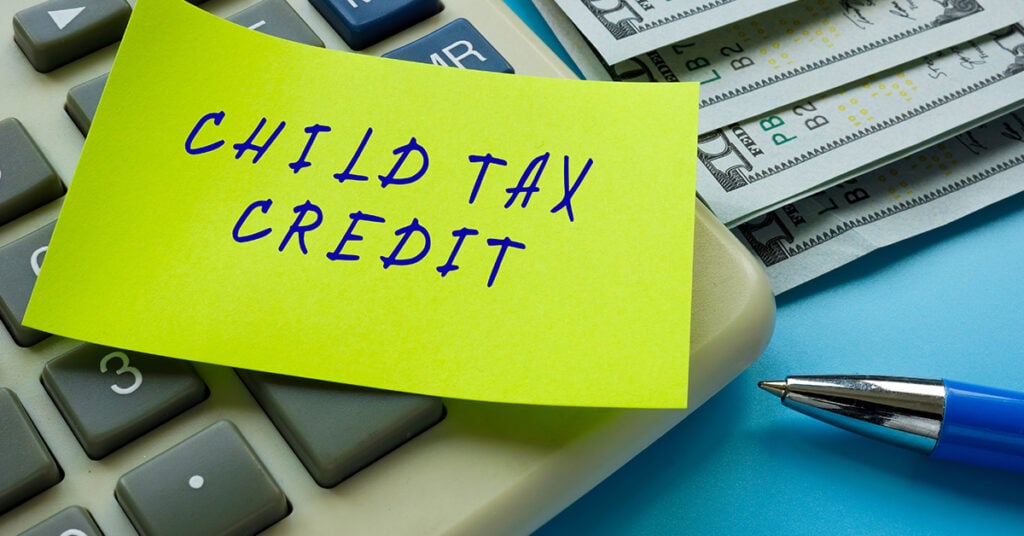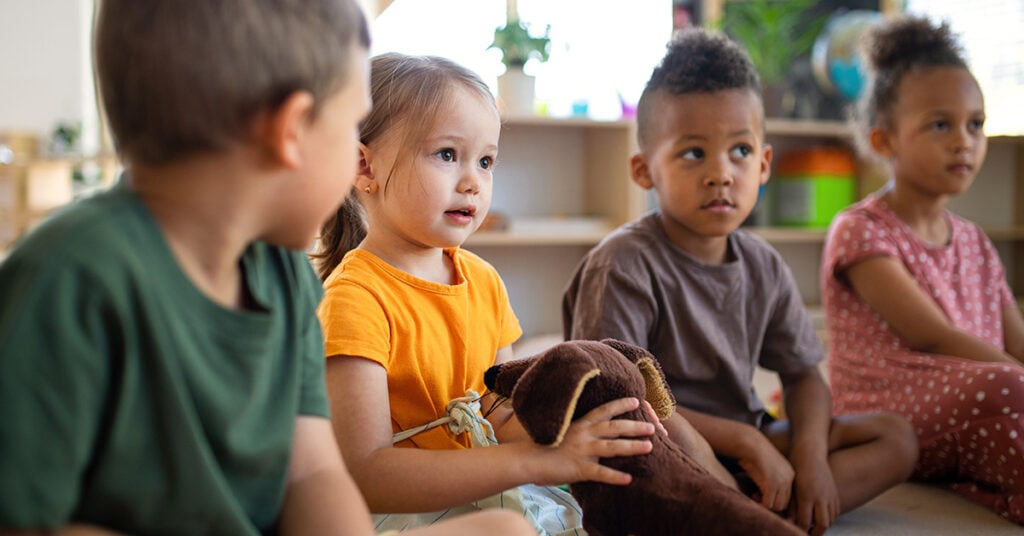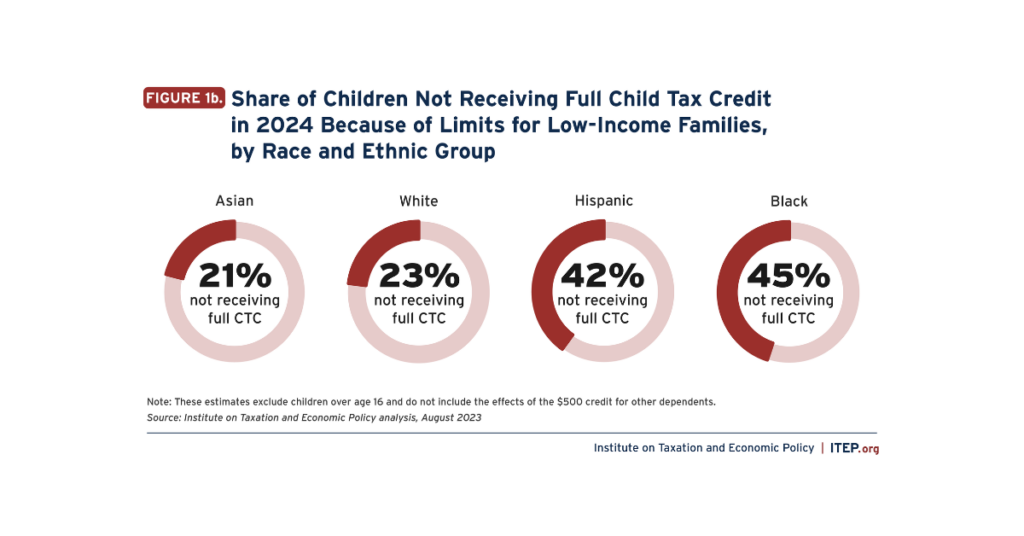Lawmakers accomplished something commendable in 2021 when they expanded the Child Tax Credit (CTC) and cut child poverty in half, the largest drop ever recorded. Despite requests from President Biden to extend the credit enhancements, Congress allowed those measures to expire at the end of 2021. With the Census Bureau’s release of new poverty data covering 2022, we now know what happened when the credit expansion ended, and the results are not particularly surprising: the nation lost the dramatic gains made against child poverty in 2021.
The rise in poverty is due almost entirely to the expiration of the CTC enhancements and other measures included in the President’s COVID-19 response package, including stimulus checks and the expanded Earned Income Tax Credit.
What the New Census Numbers Tell Us About Poverty in the U.S.
The Census keeps two measures of poverty: the Official Poverty Measure and the Supplemental Poverty Measure. The official rate is calculated without accounting for most of the assistance that families receive, though Social Security income is included, while the supplemental is based on a family’s after-tax income and includes benefits like tax credits and other safety net programs. The supplemental measure is also adjusted for cost of living in different geographic areas and is overall a more comprehensive measure for evaluating the number of people unable to afford basic needs.
Looking at the simpler measure, poverty dropped last year due to an expanding labor market and rising wages. However, measuring poverty this way does not provide as clear a picture of a family’s resources, as programs like the CTC and food assistance contribute significantly to families living below the official poverty line.
But the comparison between the two measures does point to the fact that the devastating rise in child poverty last year was due to the lack of commitment from Congress to the most vulnerable members of the population.
Comparing official poverty rates to supplemental rates provides an approximate effect of anti-poverty programs. The official measure was 11.5 percent for all people in 2022 and 15.0 percent for children, a small drop from last year. But the supplemental measure shows steep increases in poverty after including all a family’s resources. Poverty rose from 7.8 to 12.4 percent for all people, and more than doubled from 5.2 to 12.4 percent for children.
Social Security was the largest anti-poverty program in 2022, lifting 29 million people out of poverty. While Social Security forms the centerpiece of our nation’s safety net, its benefit is mostly limited to retirees, people 65 and older, and people with disabilities in the Census data. Refundable tax credits like the CTC and EITC provide the largest anti-poverty benefit to working people and people under 65. Food assistance through SNAP, housing subsidies, and other programs also offer essential support to families suffering from economic insecurity.
Congress Can Reverse this Mistake by Expanding the Child Tax Credit
Under permanent law, the Child Tax Credit is lower for families with lower earnings. And for the poorest families, it is entirely unavailable. The credit has complicated limits on “refundability,” or the amount that families can receive beyond the taxes that they owe. First, the refundable credit amount is less than the full credit amount, and second, the refundable portion of the credit phases in with a family’s earnings. Together, these limits mean that a married couple with two children needed about $35,900 last year to receive the full credit next year. ITEP recently estimated that 99 percent of children in families earning less than $25,000 will receive a reduced credit or no credit at all.
The new Census data should provide both concern and optimism for lawmakers. The steep rise in child poverty is an inexcusable tragedy. But it shows that child poverty is avoidable when Congress makes the decision to make tax policy for those who need the hand up rather than for the rich and powerful.
When the federal government decided to invest in children in 2021, child poverty plummeted. When they backed away from that decision, child poverty skyrocketed. This is not some mysterious economic happenstance. It is the direct result of policy choices made by those elected to lead.

